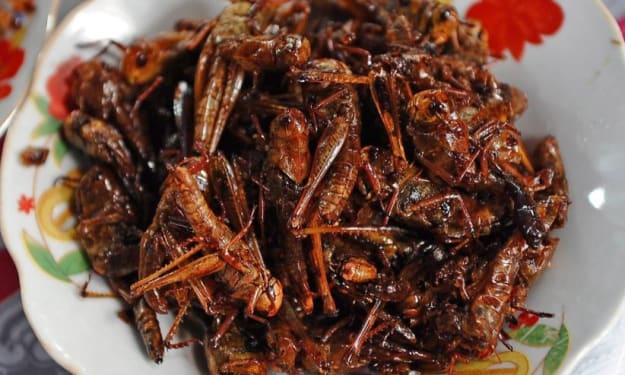
Mongolians are accustomed to eating mutton from childhood, and when they don't eat mutton for a few days, they will miss it. Mongolian dancer Sichin Gova (there are many Mongolian women named Sichin Gova, as common as Narenhua) came to Beijing, bringing her daughter with her. Her daughter was not used to the Beijing food. We invited her to eat at Jin Yang Restaurant, but the little girl was not interested in braised sea cucumber, crispy fish and so on. I asked her what she wanted to eat, "Mutton!" I called the waiter and asked if they had lamb here, and they said they only had lamb in sauce. "Lamb in sauce is fine, is it salty?" "No, it's not salty." When it came up, it was a plate of lamb bullock. The little girl ate the plate of lamb bullock with her white mouth. Ask her, "Is it good?" "Yes!" Her mother said, "That child! What a Mongolian! She's been in Beijing for a few days and for the first time she said 'delicious'."
Mongolians are so hospitable that someone roamed the grassland on horseback with nothing but a leg of lamb on his back. At sunset and dusk, he saw a yurt and dismounted to stay. The host took off his leg of lamb and killed it immediately. When he had eaten and drunk enough, he slept soundly in the yurt with his host family. The next day the host sent the guest on his way and gave him a new leg of lamb to carry on his back. The man walked around the grasslands a lot, when he came home, he still had a leg of lamb on his back, but he didn't know how many times it had been changed.
"When the Gang of Four was raging, we were ordered by Jiang Qing to write a script and collect materials, and we went to Inner Mongolia. I learned two Mongolian words in Inner Mongolia. Mongolian comrades say that if you can speak these two phrases, you will not be hungry. The first one is "Bu Da Yi" - to eat; the other one is "Mo Ha Yi" - to eat meat. "Moha" refers to all meat, especially mutton (there is a very special Yuan opera, Chinese and Mongolian mixed together to sing. One of the lines is "Moha whole catty swallow", meaning the whole catty to eat mutton). Sure enough, I went from Ike Zhaomeng to Hulunbeier grassland, walked a lot of places and ate hand-held meat many times.
August and September is the most beautiful time of the grassland. After a summer of rain, the grass is growing well, the grassland is turquoise. The auger is growing, the gray back green is growing, the auger and the gray back green is the most popular grass for livestock to eat. The grass in the grassland looks like grass to us, but the herders can name every kind of grass. There are wild onions and leeks in the grass (Mongolians say that their lamb there is not stinky because the sheep eat wild onions and take the taste out of themselves). Colorful flowers were blooming everywhere. The sheep are also fattened up at this time.
Inner Mongolia writers and cadres love to go down to the grassland at this time to experience life and investigate the work, but also to "fatten up". Into the yurt, first drink milk tea. Inner Mongolia's milk tea method is relatively simple, unlike the Tibetan ghee tea as trouble. Just sit in a pot of water with an iron pot, boil the water and grab a handful of tea leaves, roll a few rolls, add milk, put a handful of salt, that is. I do not feel that there are too many characteristics, but used to drink will be addicted to (Mongolian people can not leave the day milk tea. Many people get up early and don't eat anything, drink two bowls of milk tea and go to herd sheep). A table of milk food is set up, milk skin, cream (which is diluted), milk crumbs ...... and mooncakes and peach cakes. Guests drinking milk tea, outside the yurt has been set up a large pot, sitting on the water, kill the sheep. The Mongolians kill sheep really fast, not with a knife stabbed to death, is to pinch the sheep's aorta. The sheep did not even struggle, it died. Immediately open the skin, the tool is only a slightly larger than a fruit knife folding knife. A moment's work, the skin of the sheep will be peeled off and carried to a little farther away in the sun to go. Look at the scene of killing sheep, even a drop of blood is not spilled, the grass is still clean.
"Handle meat" that is boiled in white water cut into large pieces of lamb. One hand "put" a large piece of meat, with a Mongolian knife to cut themselves to eat. Mongolians are really good at cutting meat with a knife. A piece of meat is finished, the bones are not even a shred of meat left. When a child was not clean, his mother would say, "Eat clean, don't be like that cadre!" The cadres do not eat meat as carefully as the herdsmen, and they may not be able to make a knife. The herdsmen have an almost religious respect for milk and meat, just as the Han Chinese farmers do for grain, and it is a sin to trample on it. Eat hand-held meat in the past is not prepared with condiments, at most put a bowl of salt water, dipped to eat. Now there is a little condiments, soy sauce, leek flowers and so on. Because it is now killed, now cooked, now eaten, so very tender. Of all the various preparations of lamb I've had in my life, I thought hand-held lamb was number one. If I were to give it a review, I would not hesitate to say: unbeatable!
When you eat meat, you usually have to drink. Mongolians love to drink, and almost every drink must be drunk. I heard a Chinese cadre in Hohhot say "camels see willows, Mongolians see wine", meaning that they can't walk - camels love to eat willows. I thought this was a modern saying. Occasionally, I read a book of Song notes and saw the saying "camels see willows, Mongolians see wine", so it is clear that this proverb has been passed down for hundreds of years in the Song Dynasty. Unfortunately, I forgot the title of the book. The Mongols in the Song Dynasty probably drank the kind of boiled wine that Wu Song drank, not white wine - distilled wine. White wine was introduced from Arabia only during the Yuan Dynasty.
In Damao Banner, I had a "sheep beizi", which is a whole sheep boiled. The whole sheep is cooked in a big pot. It is said that Mongolians eat only 30 minutes, because we are Han Chinese, afraid to eat too raw, cooked for 15 minutes more. The whole sheep, with all four hooves chopped off, was placed on a large copper plate. The head of the sheep had been cut off, but it was still placed on the cavity behind the neck, and then moved after serving. There are rules for eating sheep's shellfish: first, the guest of honor cuts off the meat at the back of the neck (equivalent to what Beijingers call the "upper brain" part) and crosses it diagonally over the back of the shoulder, then the other guests move their knives and choose the part they like. The sheep's shellfish is really tender, and when you cut it, blood and water will come out. Some of the screenwriters and directors who went with me were intimidated by the idea of eating it, while others stopped at the shallow end, and I had a great time. The more tender the lamb, the better. Mongolians believe that the long-cooked lamb is not digestible, honestly true. I ate a stomach of half raw lamb, but nothing happened.
Mongolians can really eat meat. Two secretaries from Hailar went to Beijing to eat shabu-shabu in Dong Lai Shun. One of the secretaries said, "The other day we were in Hulunbeier and five of us ate a sheep!"
Mongolians don't just eat hand-held meat, they eat it in a variety of ways. The roasted leg of lamb in Hohhot is rotten, tender, fresh and tasty. I especially like the steamed lamb. I had "shredded lamb tail" once in a small restaurant in Siziwangqi. I have eaten shredded yam, shredded potatoes, shredded apples, shredded bananas, but I have never heard of shredded lamb's tail. Outside there is a thin layer of crisp shell, bite through, there seems to be nothing inside, a packet of water, sheep's tail oil has melted. This thing is only suitable for the Buddha, people can not eat, because it is too delicious!






Comments
There are no comments for this story
Be the first to respond and start the conversation.